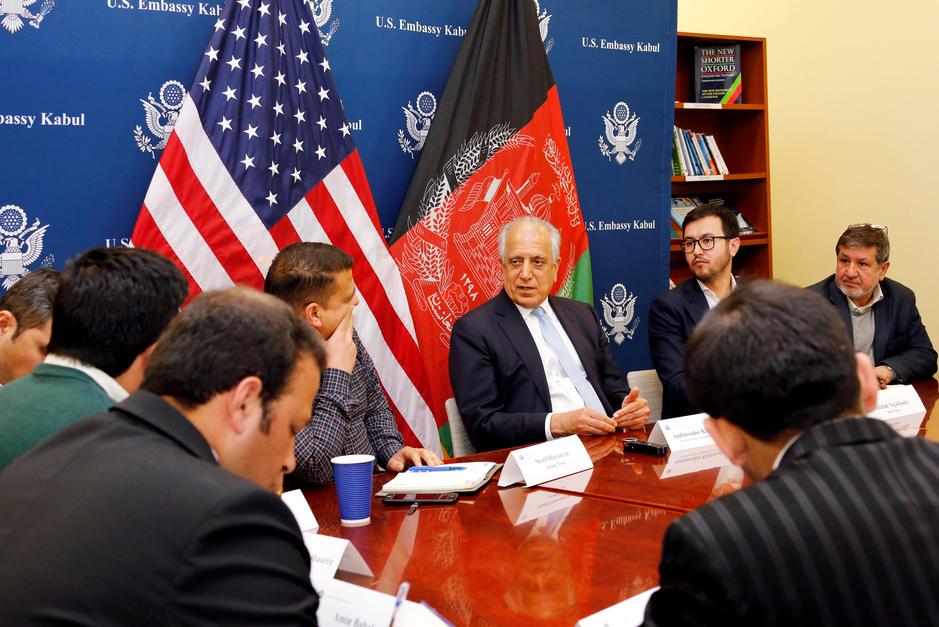Skepticism surrounds imminent US-Taliban peace deal
https://arab.news/b64wm

US and Taliban sources last week announced that they had agreed on a truce. This entailed a seven-day “reduction in violence” on both sides and, once successfully implemented, a peace agreement would be announced. According to news reports, the peace deal will be announced on Feb. 29 and will be followed by intra-Afghan dialogue between the government and the Taliban from March 10.
The truce announcement and the proposed agreement mark the culmination of a six-month-long US diplomatic effort to finalize a deal with the Taliban that would allow the withdrawal of the 12,000-strong US military presence in Afghanistan before the presidential election in November.
The US-Taliban deal calls for a nationwide cease-fire, the release of 5,000 Taliban prisoners in government custody, a timetable for the withdrawal of US troops, and a commitment by the Taliban not to harbor Al-Qaeda elements in their territories. The Taliban will also be required to dismantle their facilities in Pakistan and participate in anti-Daesh operations. The US has clarified that its troop withdrawal is linked to the Taliban delivering on their commitments.
Subject to the Taliban adhering to the cease-fire, the US will withdraw about 3,500 personnel over the next four months, leaving about 8,600 troops in the country. The agreement is said to have secret annexures relating to US-Taliban counterterrorism activities and monitoring procedures to ensure that the various parts of the agreement are being adhered to by all sides.
Domestic factionalism, foreign interventions and unrestrained violence on all sides have marked Afghan politics since the entry of Soviet forces into the country in 1979. The Taliban appeared on the Afghan military landscape in the early 1990s, when the country’s warlords and political groups failed to agree a power-sharing deal after the Soviet withdrawal. This group had taken control of most of Afghanistan by 1996 and set up the “Islamic Emirate of Afghanistan.” It soon earned global odium for its obscurantism and wanton cruelty, particularly against women.
The “Emirate,” closely affiliated with Al-Qaeda, was destroyed by US military action after the 9/11 attacks, but its cadres came back into the country to fight foreign occupation. The US led an international coalition against the Taliban that, at its peak, had more than 100,000 soldiers. However, battle fatigue caused by a lack of success eroded the enthusiasm of these troops, leading to a significant drawdown in force levels, leaving the Taliban to now control more than 40 percent of the country.
Recent US reports have revealed that American leaders had grandiose plans for the country — the destruction of extremism and establishment of a democratic order and human rights — but had no clear strategy to achieve this ambitious vision, despite the expenditure of nearly $1 trillion. Overall, as Michael O’Hanlon of the Brookings Institution has said, the US presence has been “marked by tragedy, frustration, many failures, and a general sense of disappointment.”
What has continued unabated is violence. Since 2016, there have been 11,000 casualties in the country every year, a third of them children. In 2019, the US dropped nearly 7,500 bombs on Afghanistan — an eight-fold increase since 2015. There were nearly 2,500 civilian deaths in 2019, caused equally by the Taliban and pro-government forces, including the US.
This violence on both sides has been aimed at obtaining improved leverage in the ongoing negotiations: The US seeking to pressurize the Taliban to be more accommodative, the Taliban displaying their military prowess. Ordinary Afghans have paid a horrendous price for this mutual oneupmanship.
There is now a natural skepticism surrounding the prospective US-Taliban agreement. It is likely that, with a temporary cease-fire, the Taliban will give the Americans what they desperately want — to get out of the country. The Taliban will then deal with the weakened Afghan government and pursue their agenda of territorial expansion.
Violence on both sides has been aimed at obtaining improved leverage in the ongoing negotiations.
Talmiz Ahmad
The forthcoming government-Taliban dialogue is also fraught with grave uncertainty. As of now, the Taliban do not even recognize the Ashraf Ghani government and will not negotiate with its official representatives. Even if some form of engagement were to occur, the Taliban are likely to insist on an interim government, of which they are a part, and the preparation of a revised constitution that reflects at least some of their views and values. The Taliban are no longer a monolithic entity; they are divided into mutually competing “shouras,” which are backed by different external entities — some of them are hard-liners and are reluctant to give up the Taliban’s maximalist agenda and the use of violence to attain it.
Yes, Trump does want his boys home from Afghanistan, but they will leave behind a sordid mess.
- Talmiz Ahmad is an author and former Indian ambassador to Saudi Arabia, Oman and the UAE. He holds the Ram Sathe Chair for International Studies at the Symbiosis International University, Pune, India.







































